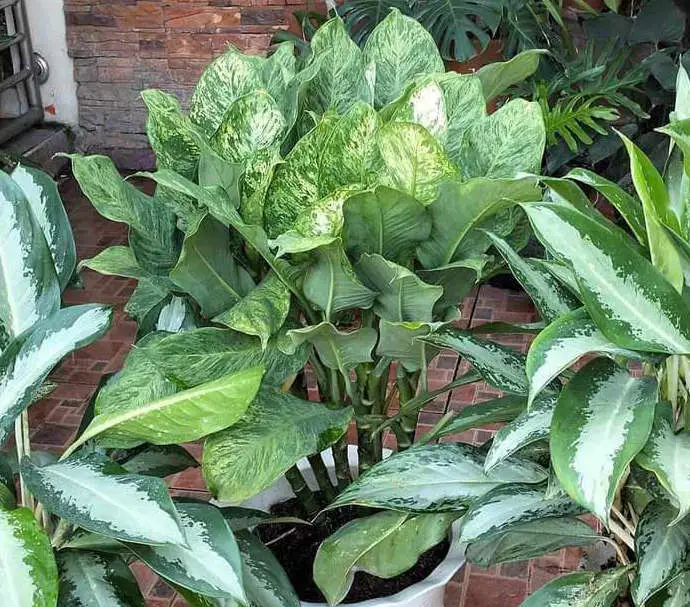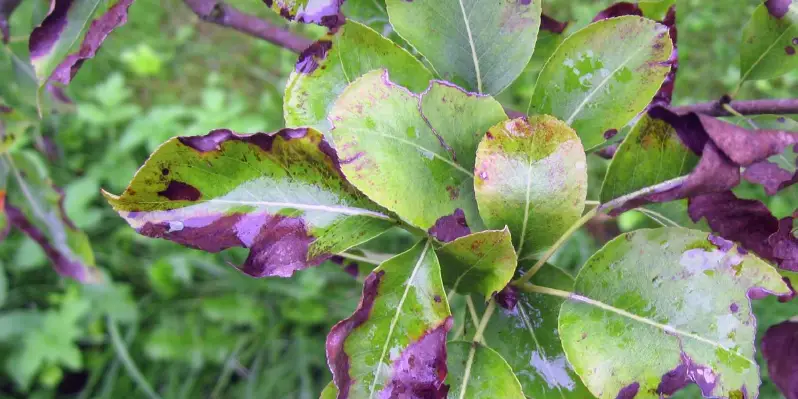Monstera plants are tropical plants that grow in the shade and humid areas. They originate from Central America, where they can typically be found on trees or rocks near waterfalls. Monsteras have large leaves with glossy surfaces, which makes them perfect for indoor decoration.
However, you may sometimes notice black spots on the leaves! What is causing this issue? Should you be worried?
This is not an uncommon problem, but it should be taken care of quickly before it spreads to other plants in your garden or home. In this guide, I tell you how to deal with black spots on your monstera plant. Let’s get started!
Why Does My Monstera Have Black Spots?
Black spots on monstera leaves can be caused by a bacterial leaf spot. The black spots are typically found between the veins of the leaves and are often surrounded by yellow-orange margins. This bacteria causes black or brownish-black lesions that develop in warm and humid weather conditions.
It is important to act quickly if you notice black spots on your split monstera leaves, as this bacteria can spread easily to other plants and will damage the plant very fast!
How To Fix Black Spots on Monstera?
To find out how to fix black spots on a monstera, we first need to find out what is causing the bacterial leaf issue. There are many potential issues, so we will give an overview of each issue and how you can prevent it.
If you want a quick answer, you can get rid of monstera black spots by using a fungicide, like neem oil (Amazon link).
1) Root Rot
Root rot is a problem that occurs when your indoor or outside montera plant gets too much water and the roots rot. This typically happens in winter, when it is cold and you accidentally don’t adjust the watering schedule.
To prevent root rot from happening, you should water sparingly throughout the year, make sure there is proper drainage, and ensure that all excess water flows away after watering.
2) Physical Damage
Sometimes the physical damage is just a byproduct of another issue, but sometimes it can be caused by bugs. I’ve seen monstera leaves with black spots that were being eaten away from chewing bugs (like aphids or caterpillars).
If you see this happening to your plant, take care of the problem immediately! Monsteras are not fond of pesticides and chemicals so we would suggest using an organic pesticide, like neem oil. This can also prevent other future issues because pests often come back in multiples when you don’t get rid of them fast enough.
3) Excessive Misting
Monstera plants love humidity but the monstera roots hate stagnant water. If you mist them too often, the leaves will accumulate a lot of moisture, which can result in fungus and other diseases.
This can cause black spots on monstera leaves that are otherwise not caused by an issue we mentioned above! To prevent this from happening, you should water your plant well every week, don’t leave standing water, and only mist lightly with room temperature distilled or purified water.
4) Disease
Black spots on monstera leaves could also simply be caused by disease. If you are dealing with bacterial leaf spot and none of our other solutions work, this might just be what is happening to your plant.
To prevent a disease from affecting your monstera, you should ensure proper ventilation in your home, keep humidity levels moderate (50-60%), make sure there are no stagnant water sources near or around your plant, and monitor for any issues and take action quickly if needed!
5) Sunburn
Monsteras are tropical plants and they love the sun! If your plant is in a shady area it will be less likely to develop black spots on monstera leaves. This issue can also be caused by too much fertilizer or poor drainage.
If your monstera gets sunburned, there isn’t really anything that can treat this problem besides moving the plant somewhere else where it won’t get burned again…
6) Cold temperatures
Monsteras are tropical plants and they like it hot! If you live somewhere where temperatures drop below 50 degrees Fahrenheit, your plant will stop growing. This can cause black spots to form on monstera leaves that aren’t caused by any of the other factors we have mentioned in this article.
7) Dehydration
If your monstera is not getting any water, it will start looking for moisture in its leaves. If the roots can’t provide enough water to keep up with this process, then you may see black spots on leaf tips that are otherwise healthy and green!
To make sure that doesn’t happen, you should monitor your plant’s soil every day, water thoroughly but sparingly, and create your own watering schedule.
Conclusion
In conclusion, black spots on monstera plants can be caused by many different factors, but there are ways to fix them. Some methods may work better than others depending on the plant and issue at hand.
In order to keep your foliage healthy and clean, make sure that you inspect it every day for any potential issues that could arise over time. Having a routine of inspecting your leaves will help prevent major problems from forming in the future! Make sure to follow these tips so black spots do not become an issue down the line!
If you are providing your monstera with everything it needs to survive and just need to get rid of the black spots as fast as possible, then I would recommend using neem oil.
Tim is an avid gardener from the UK. He was the founder of PlantCarer.com from 2021 to Sep 2023. He sold PlantCarer.com to Aaron. He has since started his own business called Seed To Supper, which provides new gardeners all the materials you need in a box (pots, seeds, compost and instructions) to grow your own delicious and nutritious vegetables and herbs from start to finish – no garden required.







0 Comments